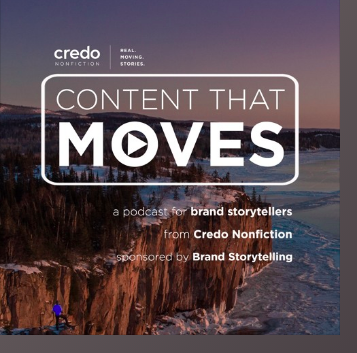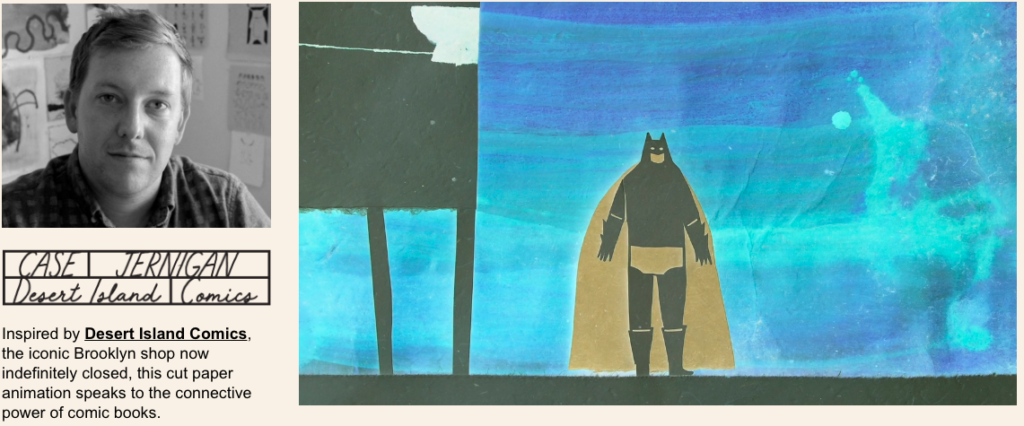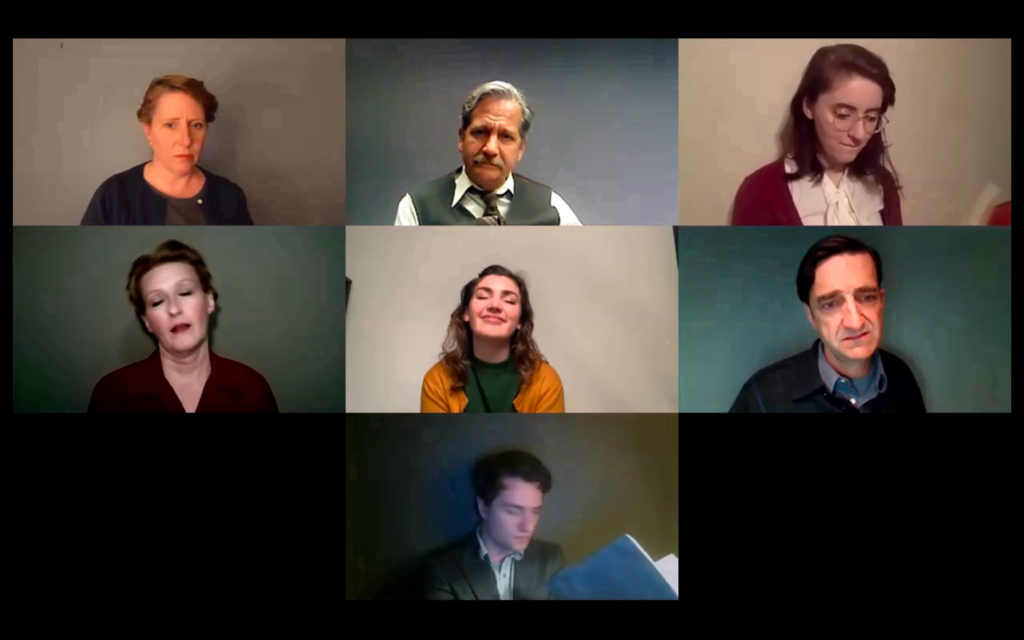
Innovation vs. Inertia. That’s the tug of war I’m feeling most during these crazy times. If you know me and read this newsletter, you can guess which one I prefer. I want to see more innovation coming out of this crisis. But while everyone says they’re innovating, I feel that inertia is winning out. It often does. It’s always easier to maintain the status quo, and during a time of crisis, just getting back to the status quo can seem like a big win.
I admit – it would be nice to go back to the world I was living in around early March. But in actuality, we’re learning that in early-March, we just thought we were living in the BC. In actuality, the virus was probably already in Europe as early as November, and in the US by January, if not earlier. Underneath the calm, we were already in the middle of the crisis. Inertia was killing us, and we didn’t even know it.
Likewise, the film business wasn’t all hunky-dory before this crisis hit. I don’t care what part of the film business you work in – if you are honest with yourself, I’m pretty sure you’d admit that the old system wasn’t working all that great. Whether you’re a filmmaker, or a festival programmer, a sales agent, a brand film marketer, or a studio mogul, the status quo hasn’t been great for awhile. Heck, even Netflix and Amazon were dealing with debt, competition, standing out in an attention economy and runaway costs. Wherever you sat in the film world BC, things were shaky. There’s a reason Netflix’s break-out show was called House of Cards.
I bring this up because I’ve been having a lot of conversations with people in the industry lately, and the conversations always fall into two categories – people who want to blow things up, and build something new, and those who feel we just need to get back to normal again. Innovation isn’t technology, either. If you re-build the same system, but just move it online during covid, that’s not innovation. That’s just maintaining the status quo with some newfangled trappings. That comes from inertia, actually.
Innovation vs. inertia. And if I was to bet on what will happen next, I’d bet on a lot of inertia and return to the status quo, and a lot less on innovation and new models. Because innovation is hard, and the opportunity costs can bring on…inertia.
That’s one of the reasons I’ve been writing this newsletter (since 2006) – to try to push for less inertia and more innovation. My very first post was about imagining possible futures for the media arts. In retrospect, that post is pretty clunky, but the push towards innovation was there. During this past week, I’ve been getting a lot of feedback to my post about film festivals, which just ran in IndieWire as well, and most of it has been positive. But the emails, posts and conversations I’ve enjoyed most have been the ones where people say something to the extent of – ok, how do we come out of this and build something better? And that’s what I hope to keep pushing for while most of us are stuck at home – getting past the inertia and innovating for the future. That’s definitely not easy when you’re wearing a mask and gloves, and trying not to touch your face. But it’s a lot better than going back to the status quo.
My Interview on the Content That Moves Podcast
Jesse Roesler of Credo Nonfiction has a great ongoing podcast called Content That Moves, which is sponsored by BrandStorytelling, and he interviewed me back in January during their conference at Sundance about branded content and distribution.

While I am biased, I think we had a great conversation that would be useful for any brand thinking about how to make quality films that get real distribution – in film festivals, theaters and/or broadcast and SVOD. And as people seem to be moving budgets away from traditional marketing into more “genuine” content, this can be a good time to think about when it makes sense to get such content out beyond YouTube or your owned channels. Those also make sense, and should be part of any distribution equation, but often you want things on Netflix or NatGeo, or something like that, and that’s what we’re discussing here. It’s probably also a useful conversation for anyone working in this space, or wanting to, as a filmmaker, but that wasn’t the focus of our talk.
I also recommend checking out Jesse/Credo’s other work – he’s a good filmmaker and his company is making some great stuff. And the podcast has other strong interviews, with many more good ones coming soon. Listen here.
Stuff I’m Reading: Film
Can Filmmakers and Festivals Collaborate to Make a Better Future? That’s the gist of what I’m asking in my updated Op-Ed for IndieWire, which is a slight rewrite of my piece here last week. They titled it: Filmmakers Should Avoid Online Film Festivals, Unless They Ask These Questions — Opinion: Many filmmakers are wondering if they should accept offers from online programs. Here are the hard questions they should ask. Not a ton of changes from before, so no need to read it again, but if you missed it, this version is edited and adds some small points.

Drive-In O-Rama – Everyone wants in on the drive-in game now. Some recent great links – Vilnius (Lithuania) turned its airport into a drive-in; a guy made a home-made drive-in for $100 (this is half-brilliant and half-The Onion; and h/t to Kelly Devine); and the CTC folks made a guide to opening a drive-in (via Celluloid Junkie)
Vimeo Launched Stories in Place – a small collection of short films made by artists about small businesses, supporting them during this time of crisis. I’m loving the creativity that I am seeing on so many platforms during this crisis, and this is among the better ideas. Here’s a shot from one of my favorites of the batch:

Deadline Shows the P&L for Yesterday – In a real coup, Deadline got a hold of a participation statement from Universal for Yesterday, which shows how a film can gross almost $154-Million globally, be on track to net $45-M but somehow show an $88-M loss. A lot of it is because of hefty distribution fees, plus overhead, and other creative accounting. But while this is a bigger movie, any indie filmmaker or investor should read this article and the attached screenshot of the statement closely. When I ran the Transparency Project at Sundance, I saw about a thousand of these from multiple films, and they were all pretty similar to this one. It shows just how hard it can be for any cast/crew or investor to make back anything once a distributor does their accounting.
The DPA Reports on the Impact of Covid-19 on Doc Filmmakers – Last week, I reported on how the crisis is impacting artists, and one of the Documentary Producers Alliance board members sent me their recent survey results – Among those surveyed – “80-85% had already been significantly, negatively impacted by the COVID-19 crisis, and as of late March, roughly 70% of projects had already been delayed, with 40% of all projects being postponed indefinitely. For the roughly 30 projects for which our members could determine, and did report, actual or estimated losses: Overall losses for this small subset of projects totaled more than $3 million, with a median loss of $60,000 per project.” Not insignificant numbers. Note: the data isn’t online yet, but is public and should be reported on soon.
The Death and Rebirth of Hollywood? – Everyone and their mom has sent me this post from Richard Janes, so it’s probably worth reading if you’ve missed it. I think most of them are just hoping he’s right that things look good for indie producers. And I hope he’s right, but too few people are noting what I think is his most salient point, and one that very few producers are doing: “Indie producers have to become real entrepreneurs building brands, direct-to-audience relationships, and building strategies to generate the heat that agents once did for a very select few.” Amen, and now is the time to do that brand-building work.
Reviews are in on the VR Film Premiere – The SF Weekly review of the Ask No Questions VR premiere is in, and apparently the experience was pretty good – if you can stand wearing VR goggles for 2 hours. I’m not a fan or doing this anytime soon, but it was a good way to approach a premiere, and get some press, during this lockdown.
Archive Valley is offering free Archival Footage Consulting to Filmmakers During the Month of May.Great offer for filmmakers at a time when you can make a lot of content with archival.
Quibi is What Happens when you value content more than users – According to Mike Masnick at TechDirt, and I agree. I could write 20 posts about everything done wrong and how to fix it at Quibi, but I’d have to charge someone a billion dollars. Masnick’s post is pretty good. Funny thing is, I think more people may be talking about the VR launch above than Quibi.
And they’ve turned to YouTube to Try to Boost Growth – Wait, isn’t Quibi not TV, not IGTV and not…YouTube? But as TubeFilter reports, they’ve started airing episodes on YouTube (twice, in both horizontal and vertical formats…I’m laughing so hard I am crying as I type this). This is going to be the funniest biz-school case study of failure, perhaps ever. At this point, having fired their head of marketing, they should just randomly grab some user off TikTok and appoint them head of marketing. Or maybe anyone with a phone in their hand (or breathing…)? Because almost any random person could do a better job here.
What I’m Reading: Branded Content
The Brand Film Awards take place today (May 7, 2020) and they have a set of online panels and you can watch the awards online. Info and registration is here. I was on the jury this year, and there was some great work, so I can’t wait to see the awards show. The online workshop is at 2pm est, and the awards should run at 4pm est.
How to Do Brand Journalism Right: The folks at Brand Storytelling continue to do great work, and had a great panel last week on brand journalism: The True Story of Brands Telling True Stories. You can watch the recording on their YouTube channel, and if you haven’t already, look into and sign up for future events here. (and I’ll be participating in more of them soon).
Entertainment Consumption during Covid-19 Tips – UTA posted on LinkedIn about 4 tips for brands thinking about content. They are: develop your streaming strategy now (because SVOD is where it’s at); embrace comedy (the top genre); Go live (stream); and double-down on talent alliances. Read the full post here.
What I’m Reading: Misc

Watch The Diary of Anne Frank, performed on Zoom – by the Park Square Theater, normally of St. Paul, Minnesota, the theater has performed and recorded a Zoom-based production of the play, and it’s surprisingly awesome. I think I found this via the NYT, but while it doesn’t replace live-theater, it has its own charms and it seems, so new artistic possibilities. You can watch the full performance here and donate here.
